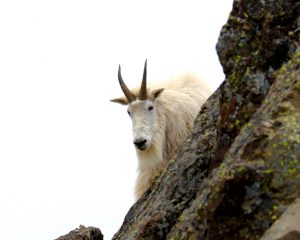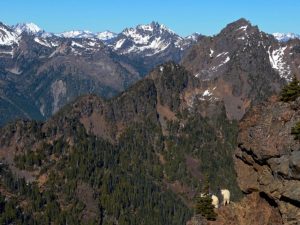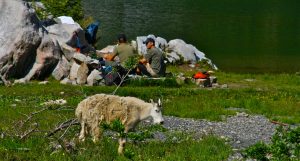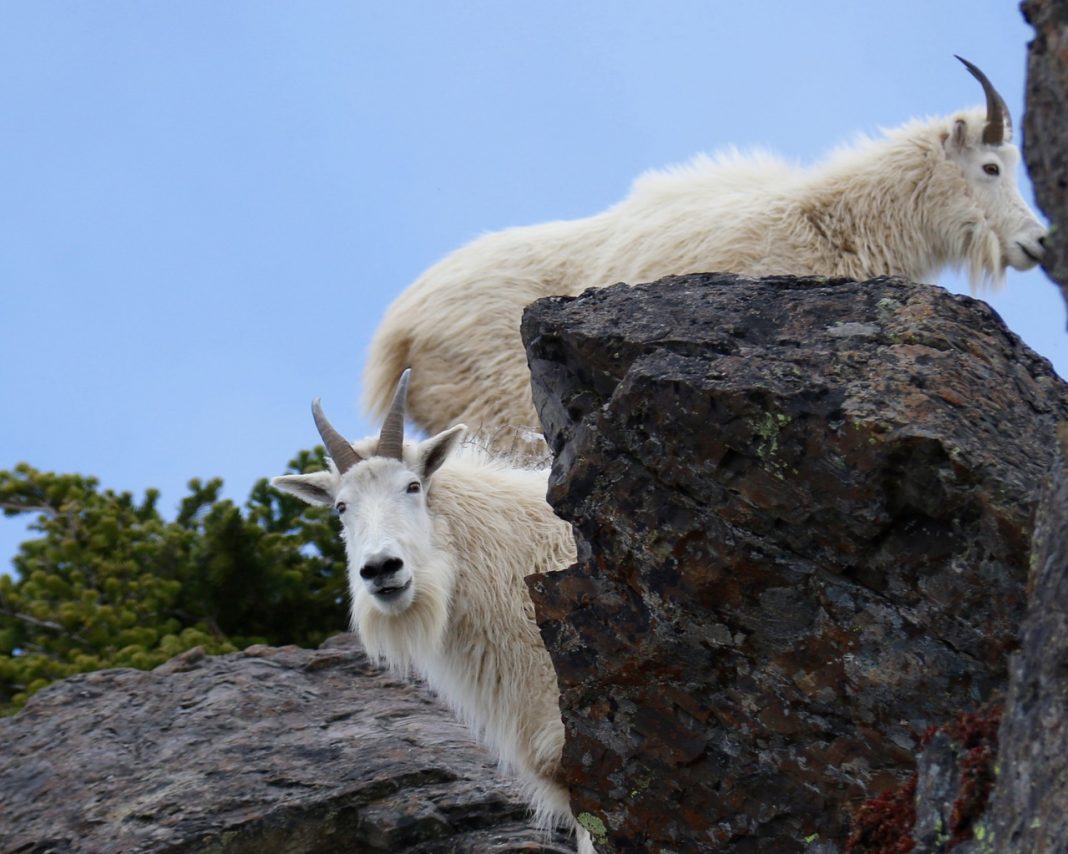We’ve all seen the iconic images from late last summer of an Olympic mountain goat, blindfolded and dangling from a helicopter, and looked at them with wonder. After all, it isn’t every day we see mountain goats flying in the skies of the Pacific Northwest. We have even heard the stories of mountain goat babies being transported to Northwest Trek, which is equally a sad and happy story.
 The mountain goat relocation has grabbed the headlines of nearly every publication around the state, but few have mentioned that in just a few short months, your chances of seeing a mountain goat on the Olympic Peninsula will pretty much vanish. That is why, once the snow melts, we hope to inspire and encourage you to go get a glimpse of these beautiful animals one last time.
The mountain goat relocation has grabbed the headlines of nearly every publication around the state, but few have mentioned that in just a few short months, your chances of seeing a mountain goat on the Olympic Peninsula will pretty much vanish. That is why, once the snow melts, we hope to inspire and encourage you to go get a glimpse of these beautiful animals one last time.
Why Are Mountain Goats Being Moved?
The mountain goats of the Olympics are being moved for one simple reason: mountain goats are not native to the Olympic Mountains. They were placed in the region from Canada and Alaska by the Forest Service way back in the 1920s, in hopes of making the area a hunting destination for sportsman. Over the next five decades, without any hunting, the goat population exploded. The number of these iconic ungulates quickly climbed from the original 12, into the upper hundreds. With no predators, alpine areas became trampled, vegetation in the upper elevations diminished, and human interactions with the horned goats increased.

It wasn’t until the 1980s that the goats were studied to see what their impact on the landscape was, and if their removal would have a positive impact on the area. While biologists around the region shared their findings and said there was an issue with keeping the goats, the population of mountain goats in the Olympics continued to grow for another three decades.
In 2010, a known aggressive mountain goat charged a hiker who was too close to the horned animal, and brutally and fatally gored the hiker in the leg. This was the first known mountain goat attack and was one of the reasons the debate to remove the mountain goats was started again.
In 2014, the National Forest Service asked for the public’s opinion on the matter, with the option of doing nothing or removing the goats. After three years, the powers that be decided to once again attempt to remove the goats from the Peninsula, thanks to more than 2,400 public comments.

The 2018 removal of the goats was just the first wave, occurring in the northern mountains of the Olympic Peninsula. In 2019, the goat removal program comes closer to home, taking place around the Hood Canal region. Once the airlifting and trucking of the mountains goats to the Cascade Mountains commences for the year, a few hunters will get permits to help eradicate the invasive ungulates for good. Starting in mid to late summer, some of the most popular trails in the region will be closed as the removal of the goats begins, taking away not just great outdoor destinations, but removing the chance to ever see a mountain goat on these peaks again. That is why we highly encourage your family, your squad or just you to head out soon to see these goats one last time.
Best Places to See a Mountain Goat on the Olympic Peninsula this Spring and Summer
With a lower snowpack than average this winter, mountain goat enthusiasts will have just a few months of exploring the trails of the region to see the mountain goats before they are removed. While predicting where animals can be spotted is next to impossible, there are two trails along the Hood Canal which frequently see mountain goats, increasing the odds you will have one more sighting. As always, be safe and follow all wildlife watching rules and regulations!

Your absolute best bet for seeing a mountain goat on an easily accessible trail is found at Mount Ellinor. With three trailheads of varying length to the summit, every level of hiker can challenge themselves while getting to the top of this iconic summit above the Hood Canal. A word of advice: once the snow melts, always drive to the upper trailhead. You can start lower, but you get zero views and many in-shape hikers struggle with the added miles and elevation gain. Mount Ellinor is a tough hike for many, but an early arrival, plenty of breaks, a lot of food and water, and a good deal of determination can make this an accessible hike for hikers young and old. Again, be aware there is a lot of elevation gain from any of the trailheads.
Another fantastic spot to see the goats one last time is to head up to the often-overlooked Lake of the Angels Trail above the Hamma Hamma River. This trail is much more rugged and only for serious hikers, as route finding is needed in a few spots, but goat sightings at the picturesque lake are quite common in the summer months. Once the snow melts, this trail is incredible and worth the effort for moderate to advanced hikers.

















































